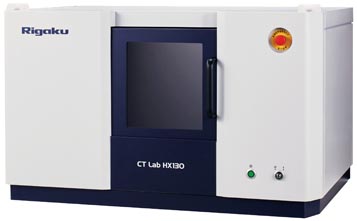PRETZEL COATING ANALYSIS
About the sample: Yogurt-covered pretzel
We are not sure if this sample needs an introduction, but just in case you never had yogurt-covered pretzels, here are a few notes. Many snacks such as candies and cookies are often coated with sugar, chocolate, etc. to add different flavors. Among those snacks, yogurt-covered pretzels are hard pretzels covered with yogurt flavored coating, which mainly consist of sugar, oil, and stabilizer, not yogurt. Because of the complex shape of the pretzel and large salt grains on the surface, the coating thickness is usually uneven. X-ray CT (computed tomography) can be used to analyze things like the coating thickness and salt grain distributions.
Analysis procedure
1. CT scan
A yogurt-covered pretzel was scanned to produce the 3D grayscale CT image. The 3D rendering is shown on the left, and CT cross-section is shown on the right. The gray levels represent the density of materials. Air appears black. The yogurt coating is light gray. The salt grains (bright white spots) are seen only in the coating.
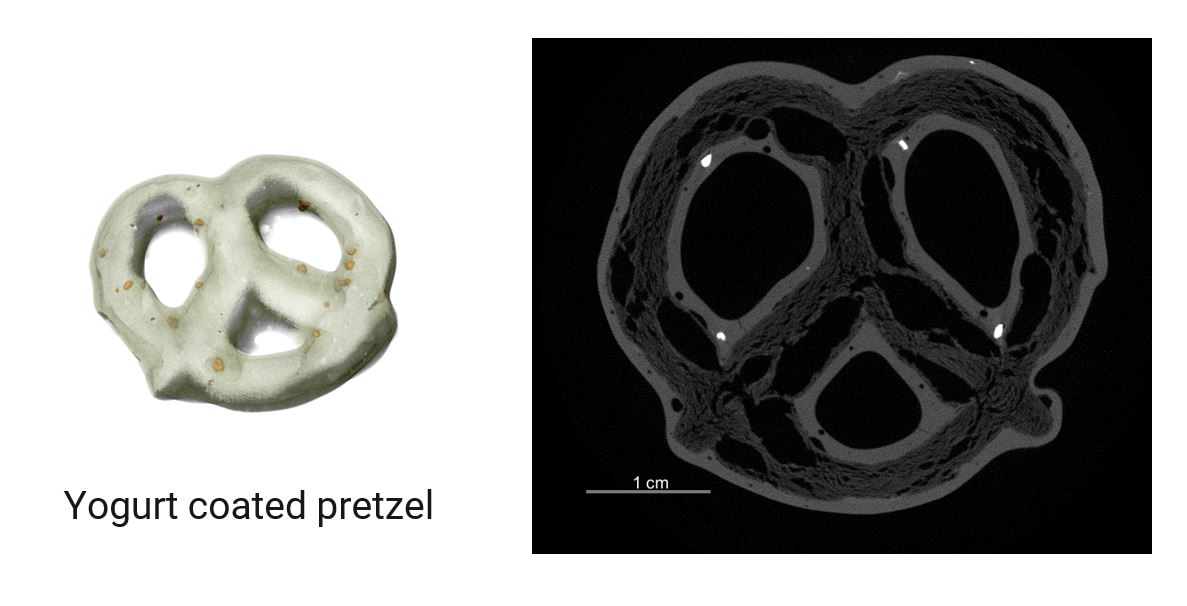
2. Segmentation
The yogurt coating was segmented using thresholding and converted into a surface mesh.
3. Thickness distribution analysis
The coating thickness is color-coded in the figure. Thin areas less than 1 mm are shown in purple and the thick areas 2-3 mm are in green to yellow. The coating is thin where the pretzel is sticking out. Tight corners inside of the pretzel holes tend to have a thicker coating.
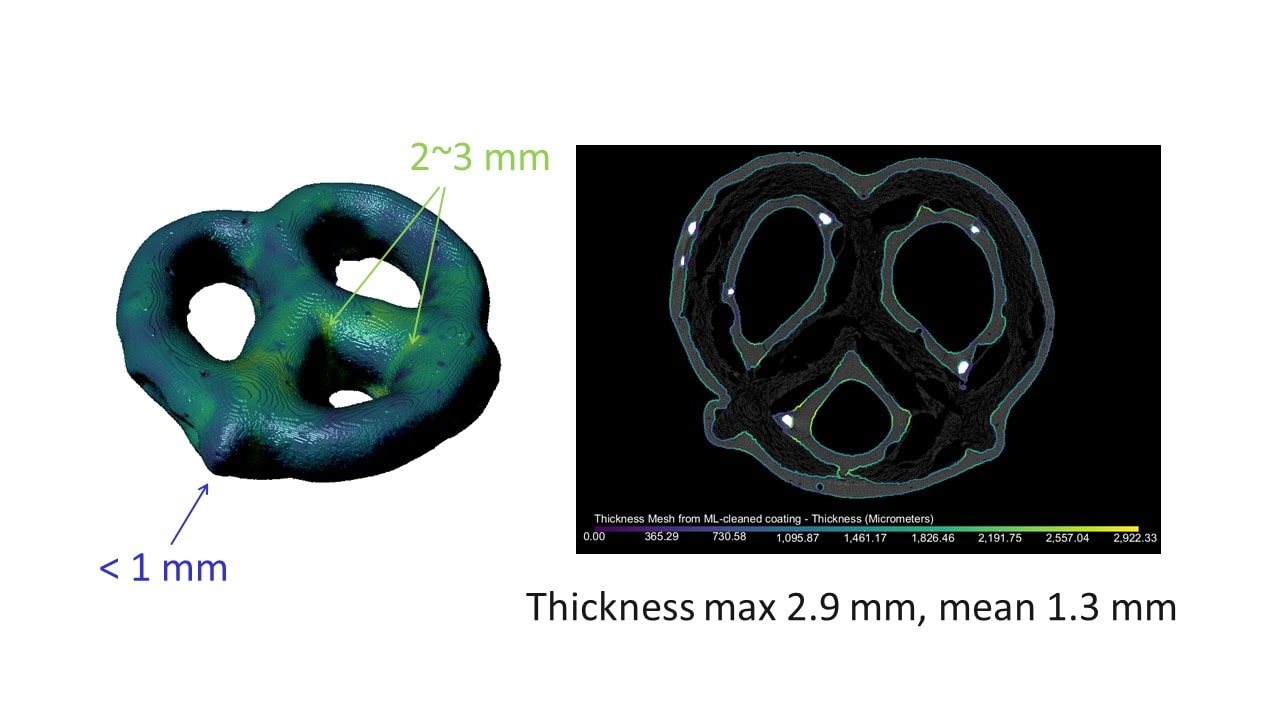
More Food Application Examples
Watch an on-demand webinar about X-ray CT food applications.

Pretzel coating analysis
Application Note
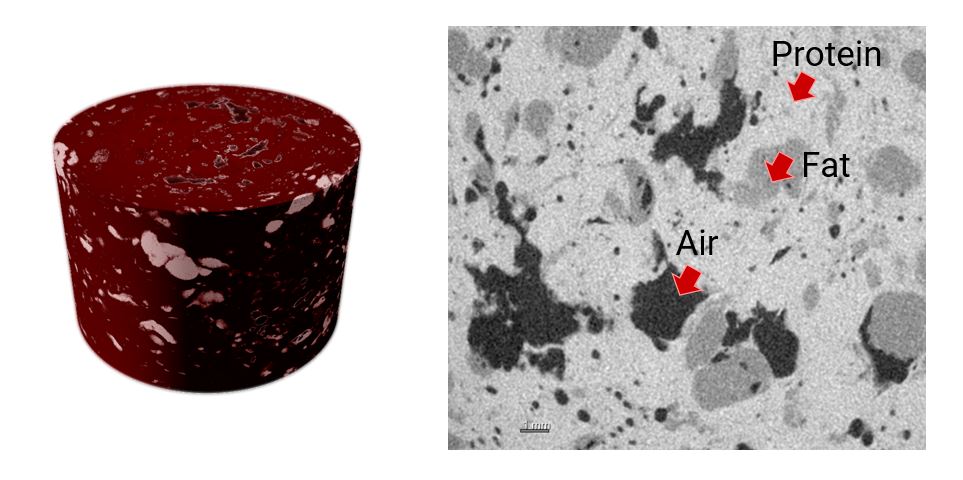
Processed meat fat and protein analysis
Application Note
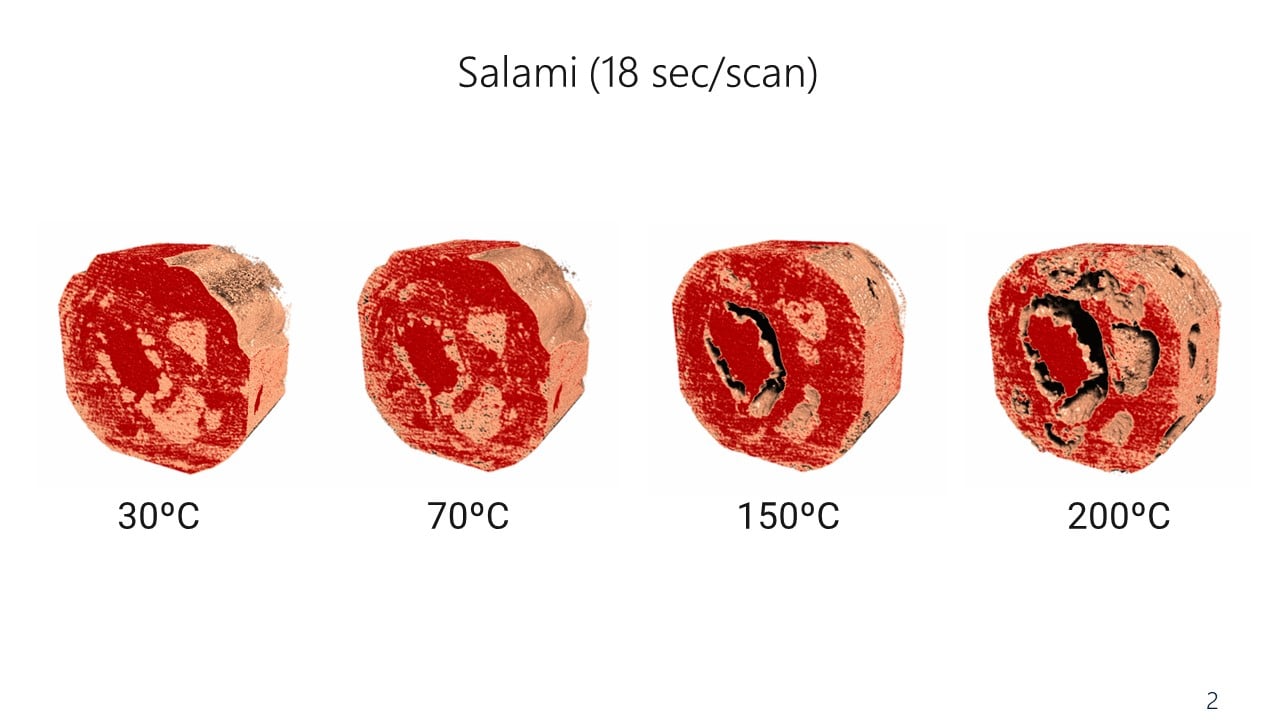
Processed meat heating experiment
Application Note
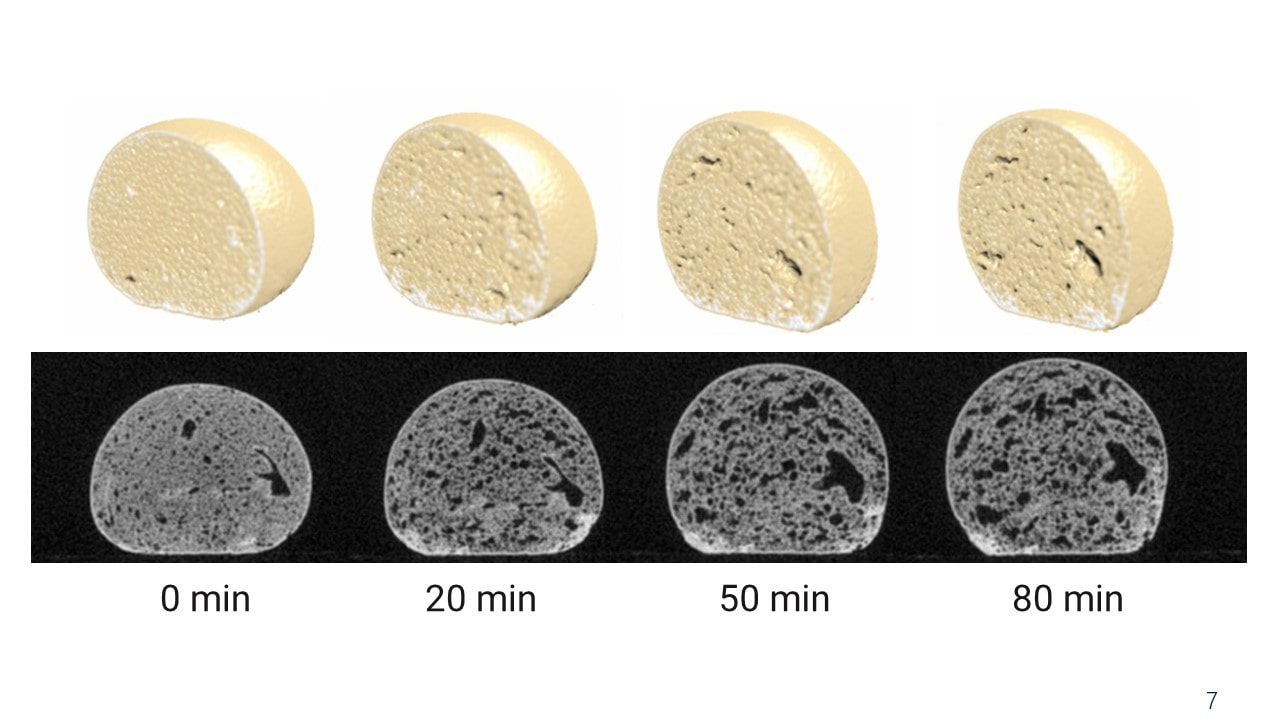
Bread dough rising process
Application Note
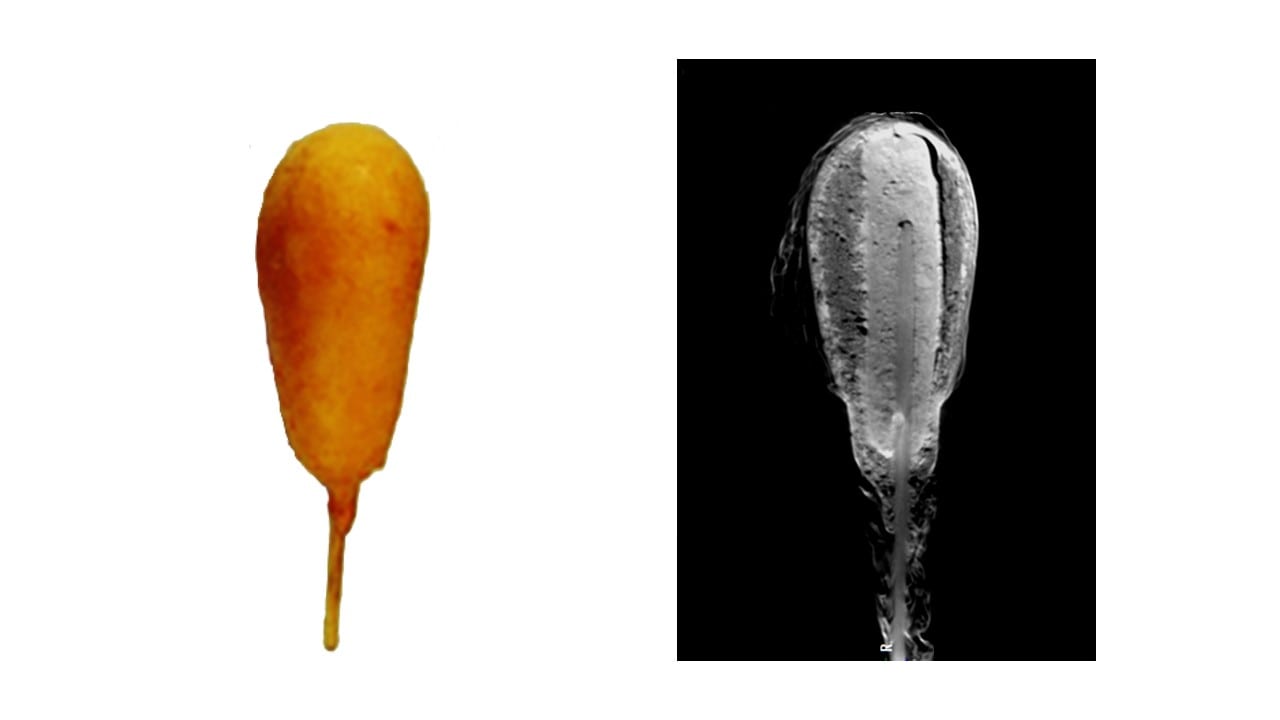
Breading air oil distribution analysis
Application Note
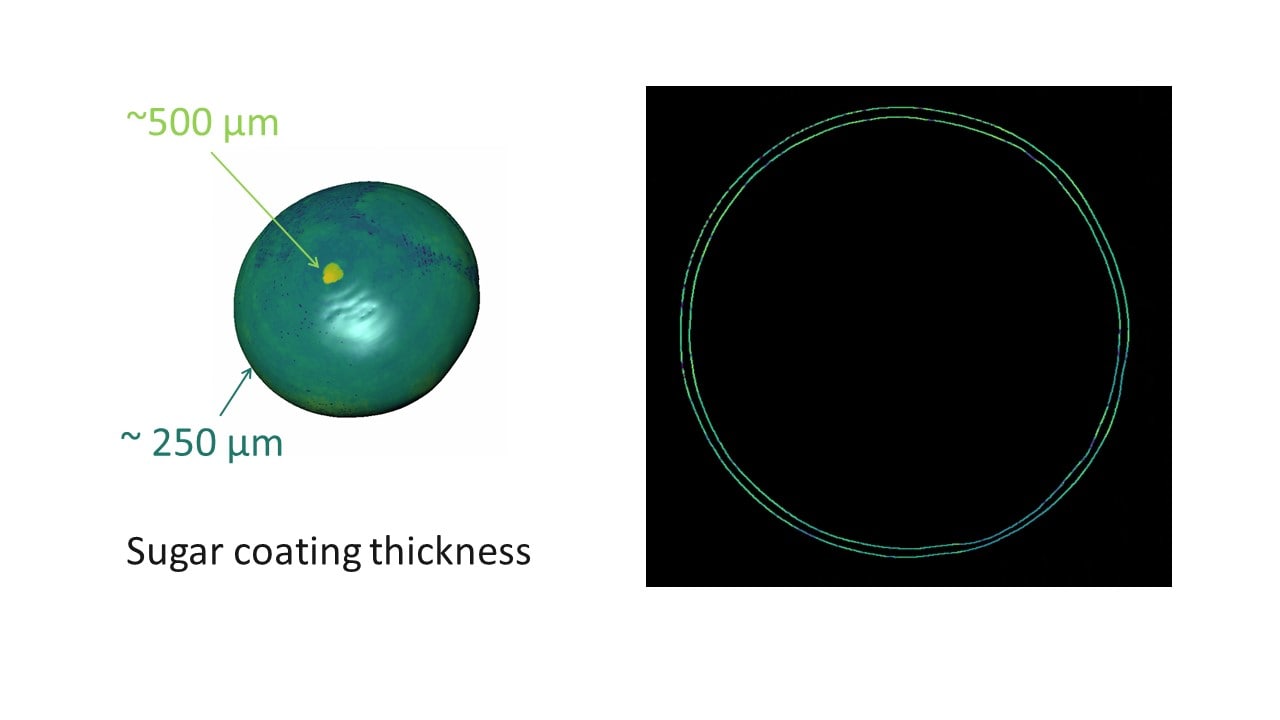
Chocolate candy sugar coating analysis
Application Note
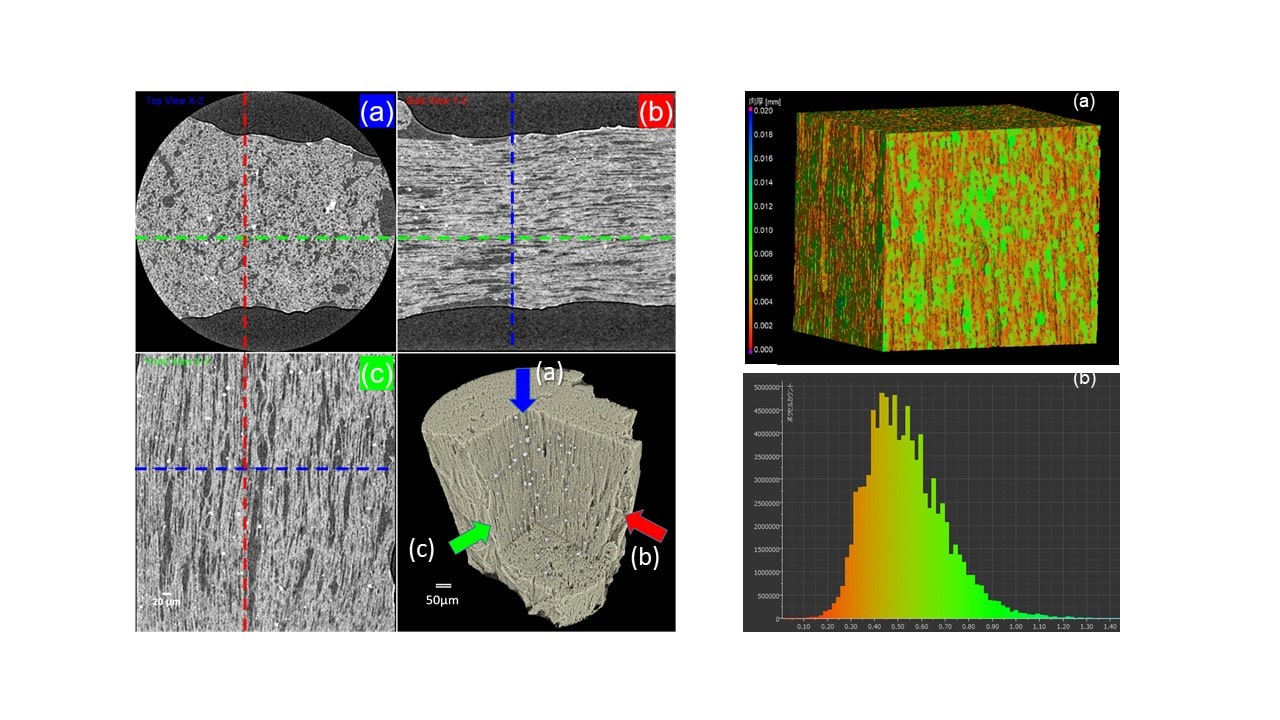
String cheese texture analysis
Application Note


